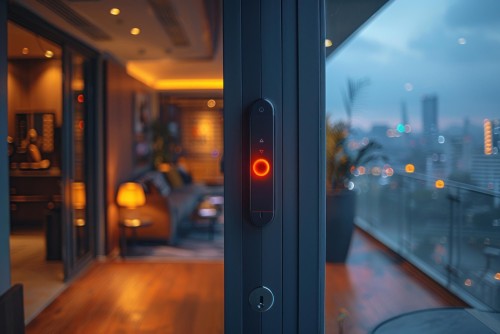Smart locks have quickly become popular for their convenience and features, yet mechanical issues are a constant risk. In this article we’ll look at the most frequently occurring issues and offer targeted solutions that will restore normalcy to your lock. Be on the lookout for firmware updates: Software upgrades can serve as tune-ups for your device and solve many issues quickly and effectively.

Misalignment
Sometimes smart locks experience mechanical problems, like latches that won’t open or mechanisms becoming stuck. These issues could be the result of environmental conditions, improper installation or firmware glitches and can wreak havoc with security, First step to solving any lock malfunction is identifying its cause. If your lock cannot communicate with apps or Wi-Fi router, try reconnecting by taking steps such as taking out batteries and restarting device; keeping hardware clean and updating firmware regularly may also improve connectivity.
If the door handle alarms constantly, this could indicate an issue with its anti-pry switch – an essential safety feature that activates when it detects any attempted entry through tampering on your front door lock. You can avoid this scenario by making sure that the strike plate is securely installed and by regularly replacing batteries to extend battery life.
Low Battery Life
If you have recently installed a smart lock and are having problems, corroded battery contacts could be to blame. Cleaning them with dry cloth or pencil eraser may allow power to reach its actuator instead, easily solved by taking these steps: remove batteries, clean battery contacts with dry cloth/pencil eraser before reinserting batteries back into lock. Extreme temperatures can also have an impact on smart locks’ operations. Winter temps may cause them to drain faster while heat can cause internal components to fail in summer heat conditions.
Some digital locks feature backup power options that allow users to open them with physical keys or temporary power sources if batteries run down quickly, helping reduce frequent battery replacement needs and increasing security. Lubricating and aligning the lock regularly also extends its life and security; software updates and battery checks may help decrease replacement needs as well.
Battery Replacement
Battery power is essential to the functioning of any smart lock, and low or dead batteries may lead to performance issues. Be sure to monitor your app for notifications about low or missing batteries so you can replace them when needed. Whenever a lock does not respond to code entries or unlocking is difficult, batteries may require replacement. This is particularly relevant in areas with frequent usage where batteries can quickly run down over time.
Low battery levels can cause the acuator (the gears that operate the lock) to stop moving, leading to failure of its locking mechanism. To reactivate it, first remove the back plate of the lock, using a screwdriver to disengage latch bolt from actuator. Re-install battery pack, press either A or Program button (depending on model) six times (ignore any beeps), re-instal battery pack and press A/Program button six times until latch bolt extends completely before pressing any beeps or press A or Program button (model dependent), reinstall battery pack then press A or Program button(model-dependent), press A/Program button(model-dependent) six times untill latch bolt extends allowing doorway entry/exit/exiting/exiting doorway/doorway/barrier then press A/Program button six times until locked door!
Anti-Pry Switch
Digital locks have gained immense popularity due to their convenience and improved security features, but like any technological device they may occasionally experience problems that require troubleshooting – saving homeowners both time and money along the way. Taking action early may save homeowners both time and hassle in dealing with such issues.
If the lock is unresponsive or shows signs of low battery, first ensure that all batteries are fresh and properly installed. Corrosion on battery contacts may prevent power from reaching the lock; as such, regular cleaning and inspection should also take place to keep this issue at bay. Furthermore, be sure to use recommended battery types for your lock model. Mechanical issues aside, smart door locks frequently experience connectivity problems with mobile apps or Wi-Fi routers, often requiring restarting them to resolve them. Finally, it is crucial that regular silicone-based lubricant be applied to its locking mechanism in order to extend its lifespan and protect against corrosion.